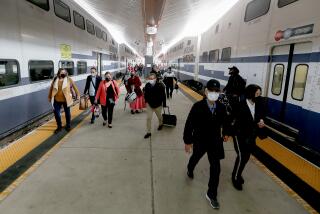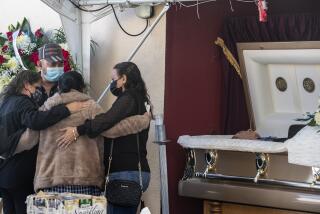COVID-19 cases higher among San Diego’s Latinos; advocates call for more testing
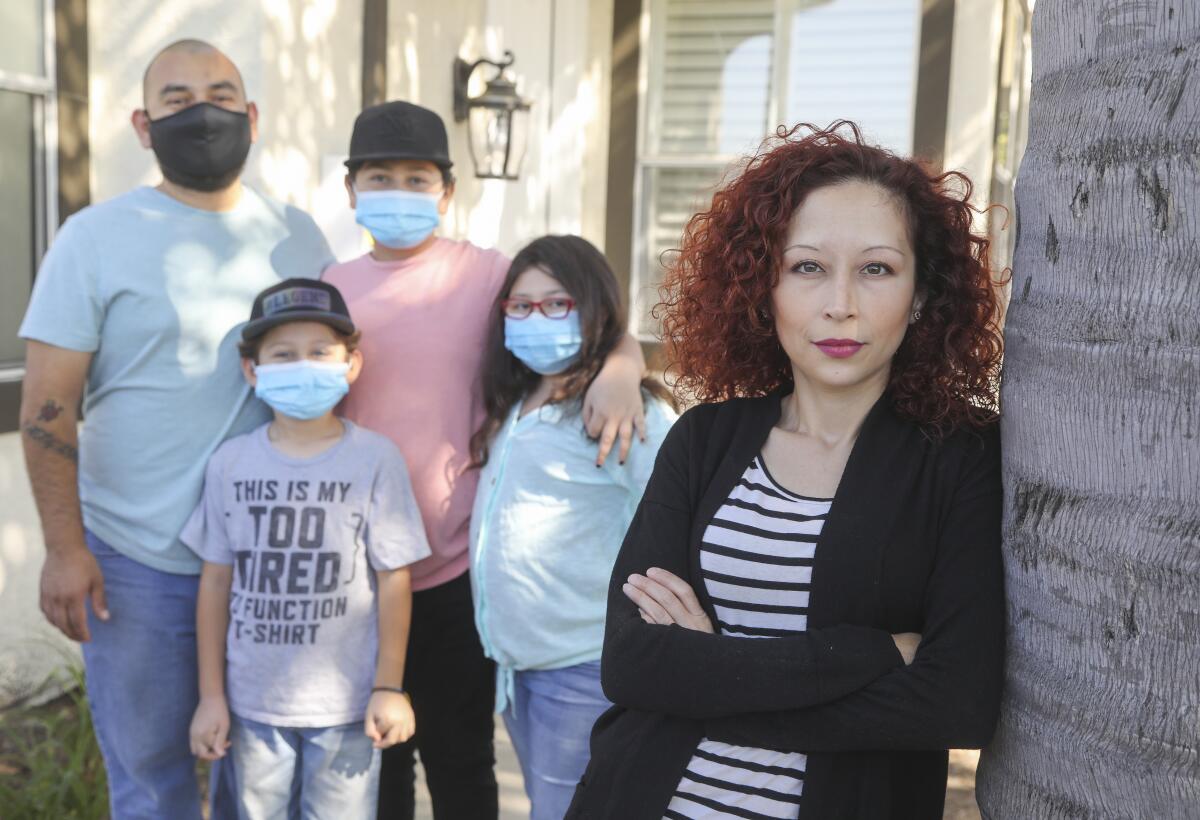
- Share via
SAN DIEGO — When Davida Dueñas gets home after an eight-hour shift at a Ralphs supermarket, she takes “crazy” precautions to protect her family from the novel coronavirus, she said.
“I spray my clothes, hair [and] shoes with Lysol,” she said. “I never thought I was going to be spraying myself with Lysol.”
It gives her peace of mind. Both Dueñas and her husband, a driver for a medical transportation company, are considered essential workers, working among the public while many other workers stay at home.
They and their three children share a room inside Dueñas’ parents’ condo in Chula Vista. Their living arrangement forces Dueñas to consider a sobering possibility: If she gets sick, isolating herself from her family — especially her mother, who recently underwent chemotherapy — would be impossible. She would have to sleep in a car.
“That would be my only option, because I’m not going to come in the house, and I would have nowhere to quarantine,” Dueñas said.
Advocates say that Dueñas is not alone; the COVID-19 pandemic is disproportionately harming the region’s Latino population, exacerbating disparities that were present prior to the coronavirus crisis. Advocates are calling on county leaders to place permanent testing sites in areas with higher populations of Latino and black residents.
They point to numbers showing Latinos’ greater risk of the virus. Latinos make up 56.1% of positive COVID-19 cases, while they make up about 35% of the region’s population.
The disparity is more glaring considering other ethnicities. African Americans make up 4.4% of positive cases and 4% of the population, and Asians make up 8.8% of cases and 11% of the population.
White people make up 28.4% of positive cases and 46% of the population, but they are dying of COVID-19 at a disproportionately high rate, according to county figures.
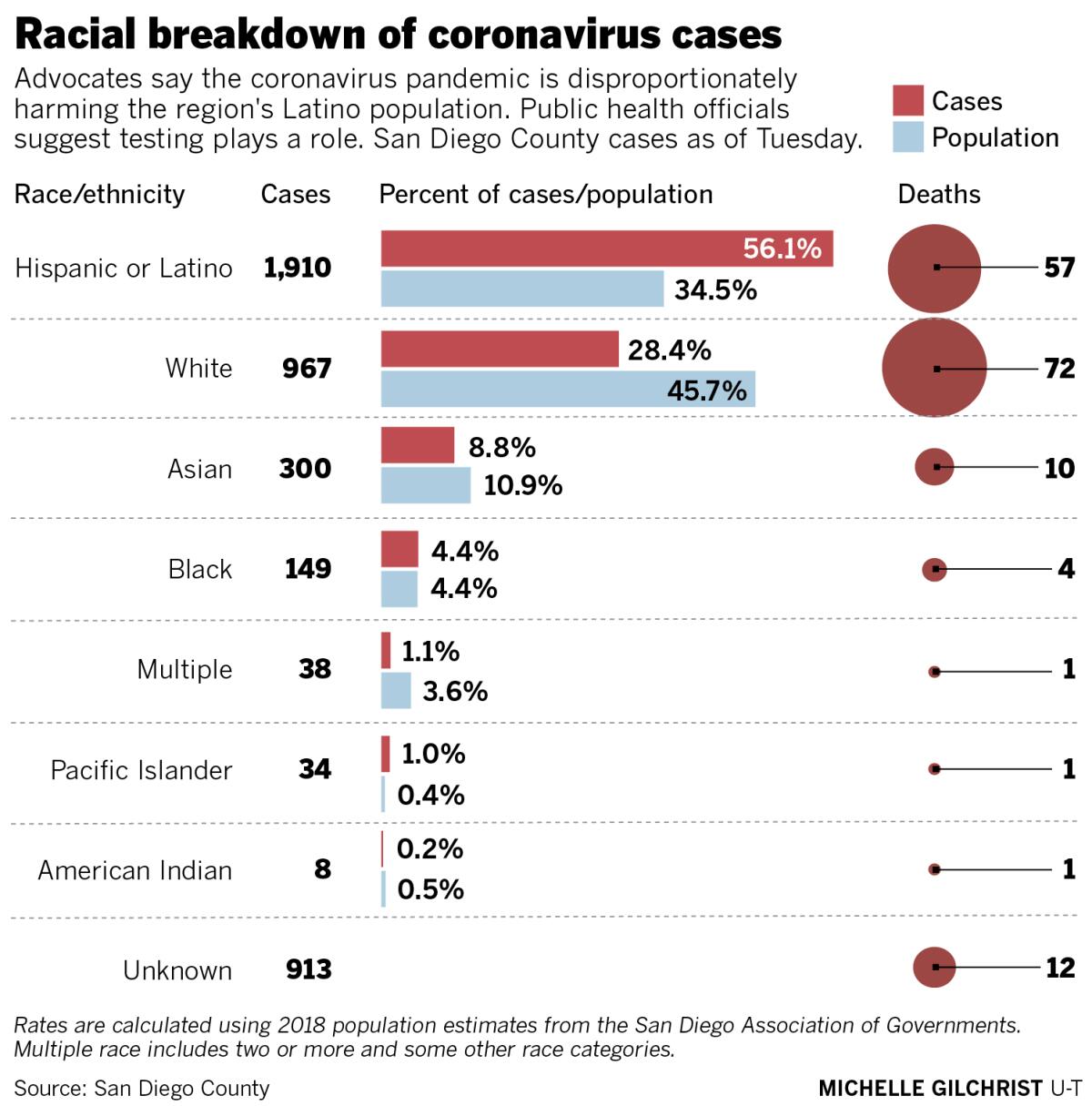
In several states and in parts of California, black and Latino people are dying of COVID-19 at higher rates than their white and Asian counterparts, which is why advocates in San Diego are monitoring racial impact numbers closely.
Roberto Alcantar, chief strategy officer with the social services and advocacy organization Chicano Federation, said its not surprising Latinos make up so many of the cases because they are overrepresented in low-wage, essential jobs, which puts them at higher risk.
He said Latinos also suffer from historical disadvantages, such as lack of access to healthcare and affordable housing — causing many families to live together — and high asthma rates in communities with poor air quality.
“Those things have set up a system that has essentially made it easier for the Latino community to fall victim to COVID-19 and to really be at the forefront of exposure and higher risk,” Alcantar said.
Public health officials, however, caution against misinterpreting the numbers and suggest testing plays a role.
“I really don’t think much should be read into that,” said Wilma Wooten, San Diego County’s public health officer, during a Tuesday news conference. “People have access, and they go and get tested.”
There are five permanent testing sites across the county. Two are located in Chula Vista, one in Escondido, one in El Cajon and another in Mission Valley.
The county identifies locations for testing sites based on COVID-19 hot spots and populations the county wants to reach, such as the elderly, racial groups and people with underlying medical conditions, Wooten said.
The county has logged the highest number of cases — 400 — in ZIP Code 92154, which includes the south San Diego neighborhoods of Otay Mesa, Nestor and Egger Highlands. The ZIP Code is approximately 67% Latino, according to 2018 estimates by the San Diego Assn. of Governments.
Several parts of Chula Vista and National City have the second- and third-highest number of cases. There are at least 140 cases in the 92113 ZIP Code area of Logan Heights and 125 cases in the 92114 ZIP Code of Encanto in southeast San Diego.
Alcantar said that for the county to say that testing is contributing to higher rates of the coronavirus among Latinos is to avoid confronting a decades-long failure to cater to the needs of the most disadvantaged communities in San Diego County.
“I don’t buy that,” Alcantar said. “This is obviously an issue of socioeconomic differences that are affecting access to healthcare, to a better lifestyle that are really exposing our community further.”
He said residents the organization serves are worried about getting sick, but they can’t afford to skip work because many live paycheck to paycheck.
Barrio Logan resident Maria Peñuelas and her four sons live in a three-bedroom apartment. Peñuelas works at a supermarket and constantly wonders if she is putting her children at risk.
“Going to work is disturbing,” Peñuelas said.
Although customers are required to wear face masks, she said, some take them off inside the store and don’t keep their distance from employees.
She is the sole income-earner in the household and can’t afford to be out of work if she gets sick.
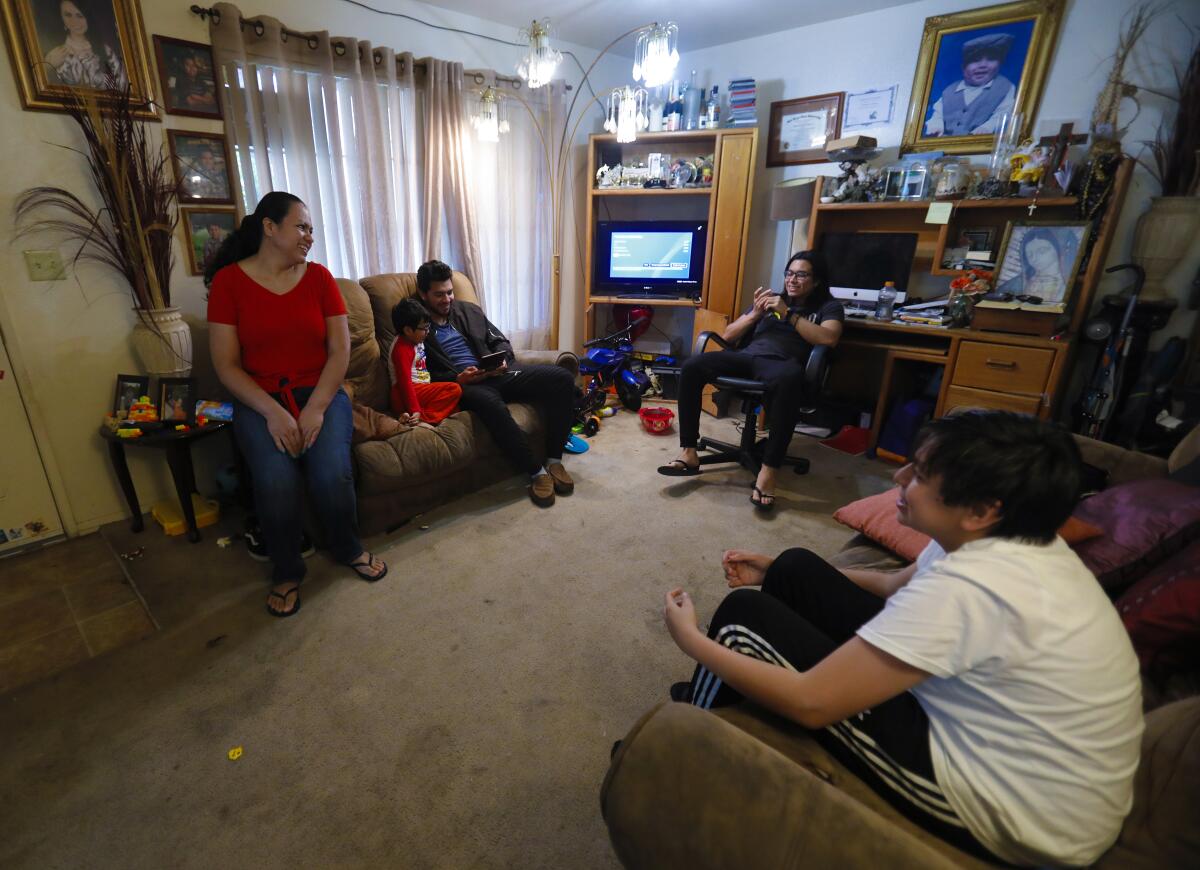
The county needs to consider testing people of color regardless of whether they have symptoms, because many are essential workers, said Suzanne Afflalo, a retired physician and community advocate.
“The front-line workers go out there; they stock your groceries; they check you out; they deliver your mail, but they come back home positive and they infect their family,” Afflalo said.
The county on Saturday held a four-hour drive-through testing site in the Lincoln Park neighborhood after activists called for more testing in the city’s southeast communities. Advocates say they want to see a permanent testing site in southeast and surrounding neighborhoods.
Afflalo agreed that the two testing sites in Chula Vista could already be contributing to higher positive COVID-19 rates among Latinos, and she speculated the number of cases among people of color will grow as more testing is done.
Dwayne Crenshaw, co-founder and chief executive of RISE San Diego, said it seems as if the county is testing everywhere except in communities that really need it.
RISE is based in southeast San Diego.
Crenshaw said public health officials already know that underlying health conditions that make people more likely to die from COVID-19 — such as heart disease, diabetes and respiratory diseases — are more prevalent in low-income communities of color than in the general population.
“The preexisting disparities that are already there are just exacerbated, if not compounded,” Crenshaw said.
The county’s two newest testing cites are in El Cajon and Chula Vista. The county also will host another drive-through testing site this weekend in southeast San Diego, but information about its location was not immediately available.
Wooten said the county is trying to “paint a broad brush” across the county, to focus on all groups that might be at risk for developing complications from COVID-19.
“Certainly Latinos have high probability of developing underlying medical conditions, they have high numbers of heart disease and diabetes, so those are the appropriate populations, as well as African Americans, and again we are extending our testing capabilities to reach other vulnerable populations,” Wooten said.
Lopez-Villafaña writes for the San Diego Union-Tribune.
More to Read
Sign up for Essential California
The most important California stories and recommendations in your inbox every morning.
You may occasionally receive promotional content from the Los Angeles Times.


